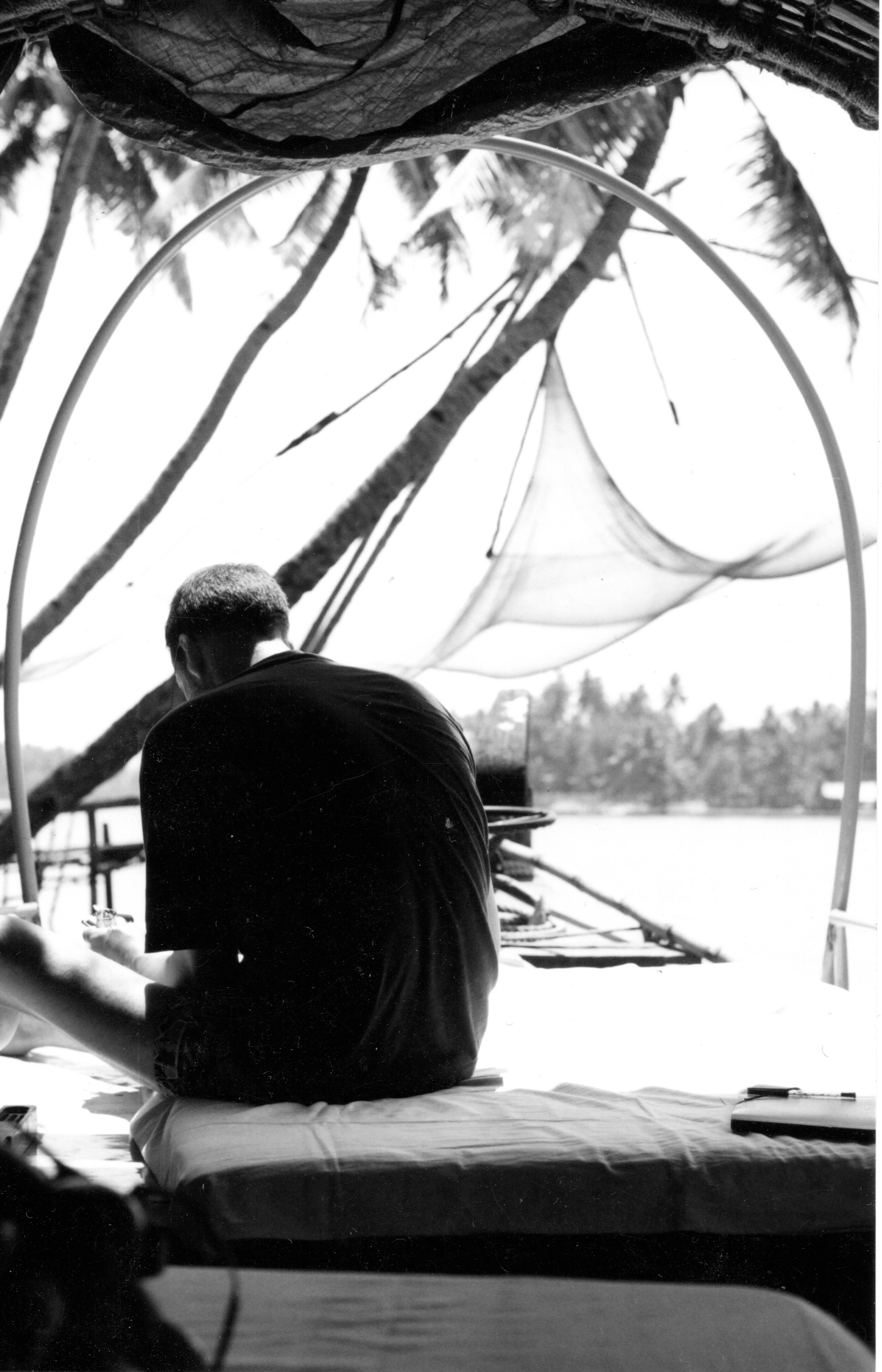Backwater in India
Information
Painted from a traditional Department of Tourism houseboat, which became a floating studio when Martin joined up with Tim Macintosh Smith in Malabar on their second journey following in the footsteps of Ibn Battutah. An account of that floating journey can be found on pages 259 - 266 in The Hall of a Thousand Columns published by John Murray.
Exhibitions
Martin Yeoman, Hindustan to Malabar 2002 - Offer Waterman.
Further reading
“In his paintings from India Yeoman bears witness; his observations, create the present, the simultaneity of object, action and time. It is the artists’ gaze that creates metaphorical space. The power of the metaphor creates the distance required for the definition of the ever-changing conditions of reality.
It is the artist who finds these intangible definitions; his pictorial interpretations connect with an emotional truth, which he may share with the viewer. The artist’s eye fuses present and past, a past, which reverberates in landscapes, buildings, textures and timeless shadows. Thus the act of travelling, observing, drawing and painting creates new meaning. Guided by deep empathy, Yeoman has achieved a fine understanding of the co-existence of mythology and reality in India.
Exchanges between Europe and East Asia started in the 12th century when Merchants from Venice began trading with China and India. The Venetians brought rare silks and spices to the West. Since the early 17th century, with the establishment of the East India Company, British travellers were drawn to India in increasing numbers. An expanding trade with India and the desire to establish permanent bases there motivated their journeys. The promise of great riches and the excitement of entering barely charted geographic regions attracted adventurers.”
Image: Martin Yeoman working from traditional Department of Tourism houseboat.

